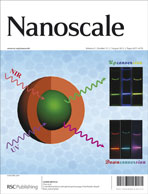In this review, we give a brief account on the recent scanning tunneling microscopy investigation of interfacial structures and properties of π-conjugated semiconducting oligomers and polymers, either at the solid–air (including solid–vacuum) or at the solid–liquid interface. The structural aspects of the self-assembly of both oligomers and polymers are highlighted. Conjugated oligomers can form well ordered supramolecular assemblies either at the air–solid or liquid–solid interface, thanks to the relatively high mobility and structural uniformity in comparison with polymers. The backbone structure, substitution of side chains and functional groups can affect the assembling behavior significantly, which offers the opportunity to tune the supramolecular structure of these conjugated oligomers at the interface. For conjugated polymers, the large molecular weight limits the mobility on the surface and the distribution in size also prevents the formation of long range ordered supramolecular assembly. The submolecular resolution obtained on the assembling monolayers enables a detailed investigation of the chain folding at the interface, both the structural details and the effect on electronic properties. Besides the ability in studying the assembling structures at the interfaces, STM also provides a reasonable way to evaluate the distribution of the molecular weight of conjugated polymers by statistic of the contour length of the adsorbed polymer chains. Both conjugated oligomers and polymers can form composite assemblies with other materials. The ordered assembly of oligomers can act as a template to controllably disperse other molecules such as coronene or fullerene. These investigations open a new avenue to fine tune the assembling structure at the interface and in turn the properties of the composite materials. To summarize scanning tunneling microscopy has demonstrated its surprising ability in the investigation of the assembling structures and properties of conjugated oligomers and polymers. The information obtained could benefit the understanding of the elements affecting the film morphology and helps the optimization of device performance.

You have access to this article
 Please wait while we load your content...
Something went wrong. Try again?
Please wait while we load your content...
Something went wrong. Try again?


 Please wait while we load your content...
Please wait while we load your content...